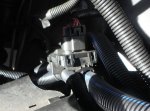billygoat162
New member
At what point do you wire an accessory’s ground directly to the battery? I’ve heard that high current ground wires should go directly to the battery to avoid issues with other more sensitive systems, and I’ve heard to never wire an accessory ground wire directly to the battery because if another ground (ie starter ground) comes loose the current will find its way back to the battery through other components and burn them up. I’ve also heard ground loop arguments for/against both.
The chassis is a common ground used for most small accessories, but obviously some accessories (ie winches) are intended to be wired directly to the battery’s ground terminal.
I’m wiring two audio amplifiers (500W total RMS), an air compressor (20amp), and inverter (800/1600W). I might add more stuff later, who knows. My plan is to run a single positive wire from a 100amp breaker at the battery to a distribution block in the passenger compartment for all of these, and either run a shared ground wire back to the battery or ground each accessory to the chassis and beef up the chassis to battery ground wire. I have 6ga single conductor power wire and about 100’ of 2ga 2-conductor wire (gotta love thrift stores). What’s the best way to do this?
The chassis is a common ground used for most small accessories, but obviously some accessories (ie winches) are intended to be wired directly to the battery’s ground terminal.
I’m wiring two audio amplifiers (500W total RMS), an air compressor (20amp), and inverter (800/1600W). I might add more stuff later, who knows. My plan is to run a single positive wire from a 100amp breaker at the battery to a distribution block in the passenger compartment for all of these, and either run a shared ground wire back to the battery or ground each accessory to the chassis and beef up the chassis to battery ground wire. I have 6ga single conductor power wire and about 100’ of 2ga 2-conductor wire (gotta love thrift stores). What’s the best way to do this?




